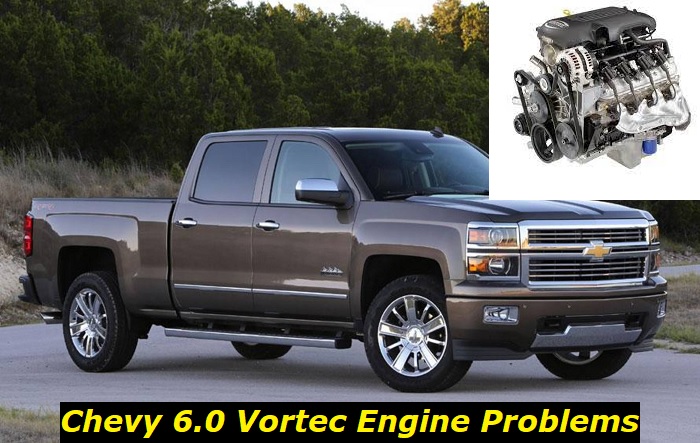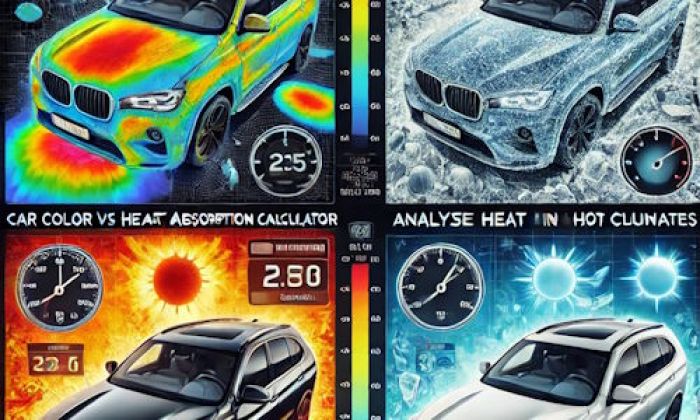The 6.0 Vortec L96 engine is considered by a lot of gearheads as a reliable engine that also boasts a pretty decent performance and a high level of durability. A lot of them claim that there are only minimal complaints associated with it.
In this article, we will confirm whether or not it is indeed as dependable as the hype says. Let's take a look at the reports and actual customer reviews covering the engine to get a precise and honest evaluation of the product.

Key features and my opinion about the engine
- Production years:1999-2007
- Average lifespan of Vortec 6000:300,000-340,000 miles
- Fuel supply type:port injection
- Power range:300-335 hp
- Fuel efficiency:awful
- Engine block material:cast-iron
- Engine reliability score:high
- The most common problems:cooling system problems with fatal consequences, oil consumption, minor problems.
Most Common Problems with the 6.0 Vortec Engine
Based on several complaints about the Vortec 6000 engine, the following are the most common problems usually encountered by its owners:
1. TPS Failure
The Throttle Position Sensor (TPS) is a key component in the 6.0 Vortec engine. It is responsible for monitoring and regulating the throttle position, and thus, has a hand in influencing the engine speed.
When the TPS sensor malfunctions, it can cause a number of problems with the engine, including decreased power and fuel efficiency, and increased emissions. Unfortunately, reports say that this specific part is usually one of the first to go in the 6.0 Vortec.
Symptoms of a TPS problem include the engine hesitating or stumbling when accelerating, poor fuel economy, and the Check Engine Light warning turning on. Among the likely causes of TPS problems include a dirty or contaminated sensor, faulty wiring or connectors, loose bolts or mounting hardware, and damaged sensor elements.
If your auto is experiencing any of these symptoms, it is important to have the problem diagnosed and repaired as soon as possible. In some cases, simply cleaning or replacing the sensor may be enough to fix the problem. However, in other instances, more extensive repairs may be necessary such as replacing the damaged wiring or connectors. In some cases, the entire throttle body may need to be replaced.
If you are having trouble with your TPS sensor, it is important to have the problem resolved as soon as possible. Ignoring it can lead to further damage to the engine and decreased performance.
2. Exhaust Manifold Leak
A majority of third-generation 6.0 Vortec L96 engine complaints can be traced back to exhaust manifold leaks. The most common symptom of this is an increase in engine noise. This is because the exhaust gases are escaping from the manifold and coming into contact with other parts of the engine. Engine performance may also suffer as a result of an exhaust manifold leak. The engine may run rough or misfire, and it may experience a loss of power. In some cases, it may stall completely.
There are several possible causes of an exhaust manifold leak. A crack in the manifold itself is one possibility. Another is that the bolts which secure the manifold to the rest of the engine might be loose or damaged. Additionally, the gasket which seals the connection between the manifold and the engine may be damaged or worn.
If you suspect a leak in your exhaust manifold, it is important to have your vehicle inspected by a qualified mechanic right away. They will be able to determine the cause of the leak and make any necessary repairs. In some cases, the manifold will need to be replaced entirely. However, if the leak is caught early enough, it may be possible to repair it without replacing the entire manifold.
3. Faulty Active Fuel Management System
Many owners have resorted to turning off or bypassing the Active Fuel Management (AFM) system of the 6.0 Vortec due to several faults blamed on it. The system is intended to conserve fuel by deactivating 4 of the 8 cylinders when cruising at a constant speed, but instead, it has been linked with various oil consumption, performance, and reliability issues. Among the most common symptoms of a faulty AFM system are increased oil consumption, reduced performance, and increased engine noise.
Aside from deactivating or bypassing the AFM as many owners have done, sometimes, this problem can be fixed by simply resetting the system or replacing its module. In other situations wherein the problem may have gone out of control, it may require more extensive repairs such as replacing the cylinder heads if not the entire engine.
No matter what route you decide to take, it is important to remember that a malfunctioning AFM system can cause serious engine damage. As such, it is always best to consult a qualified mechanic for the resolution of the issue.
4. Worn Serpentine Belt
The serpentine belt is a long, flat belt that is used to drive various engine accessories. These parts include the water pump, power steering pump, air conditioning compressor, and alternator. The serpentine belt is located at the front of the engine and is driven by the crankshaft pulley.
When the serpentine belt becomes worn, it can cause a squealing noise from the engine bay. If the belt is not replaced, it can eventually break, causing the engine accessories to stop working. This can lead to overheating, loss of power steering, and a dead battery.
If you suspect that your serpentine belt may be worn, it's important to have it checked by a qualified mechanic. They will be able to determine if the belt needs to be replaced. In some cases, it may be possible to just adjust the tension of the belt. However, if the belt is excessively worn, it will need to be replaced.
If your serpentine belt does break while you're driving, it's important to pull over as soon as possible. Turn off the engine and do not attempt to restart it because doing so can cause serious damage to the engine. Once you've turned off the engine, call a tow truck to take your vehicle to the nearest service station.
There are a few different causes of premature serpentine belt wear. The first is an incorrectly tensioned belt. If the belt is too loose, it will slip on the pulleys and cause premature wear. One more common cause is an alignment issue with the pulleys. If the pulleys are not properly aligned, it can cause the belt to misalign and wear prematurely.
If your serpentine belt needs to be replaced, it's important to use a belt that is of the same size and type. Using a different size or type of belt can cause problems with the fit and function of the belt. Additionally, it's important to follow the manufacturer's recommendations for replacement intervals.
If you're experiencing any problems with your serpentine belt, it's important to have it checked out by a qualified mechanic. They will be able to diagnose the problem and recommend the best course of action. In some cases, it may be necessary to replace the belt. However, if the belt is just worn, it may be possible to adjust the tension or alignment of the pulleys. Whatever the case may be, it's important to have any issues with your serpentine belt checked out as soon as possible to avoid further damage to your engine.
5. Damaged Water Pump
A water pump in a vehicle's engine is responsible for circulating coolant through the engine block to keep it operating at the correct temperature. If the water pump fails, the engine will overheat, potentially causing severe damage.
There are several symptoms of a bad water pump, including leaking coolant, low coolant levels, overheating, and strange noises coming from the engine bay. If you notice any of these issues, it's important to take your auto to a mechanic as soon as possible to have it diagnosed.
There are several possible causes of a bad water pump. The most common is simply wear and tear. This is because the bearings in the pump can wear out over time, causing it to fail. Another possibility is that the pump's impeller, the part that actually circulates the coolant, has become damaged or broken.
If your water pump is leaking coolant, the seals or gaskets have likely failed. These can usually be replaced relatively easily. However, if the bearings or impeller are damaged, you will likely need to replace the entire water pump, which is a more expensive repair.
Bad water pumps are a serious issue and can cause extensive damage to your engine if not addressed quickly. If you notice any of the symptoms mentioned above, be sure to take your vehicle to a mechanic as soon as possible for diagnosis and repair.
Engine Durability and Specs
The Vortec 6000 is considered by many to be a pretty dependable power unit. Regular maintenance and proper care for it can stretch its usable life to a total of 200,000 to 300,000 miles. While it is known for the issues enumerated above, it appears that the prevalence of its problems is relatively lower compared to its contemporaries in the market.
The 6.0 Vortec is a V8, small block engine designed for heavy-duty applications. It is popular with trucks, vans, SUVs, and sports cars. The unit has a cast iron block and cylinder heads. It has four valves per cylinder and is capable of running on unleaded fuel.
Upon its introduction in the year 2000, the 6.0 Vortec quickly became a hit for its high power output and reliability. Based on its various applications, it is capable of reaching up to 360 hp at 5,400 rpm and 380 lb-ft at 4,200 rpm in its different configurations while its redline is pegged at 6,000 rpm.
Conclusion
Going over various reports and reviews, the 6.0 Vortec engine is indeed dependable. It has a long life and fewer complaints compared to its direct rivals in the market. However, the most common problems associated with it should not be ignored as doing so can lead to major repercussions.
About the authors
The CarAraC research team is composed of seasoned auto mechanics and automotive industry professionals, including individuals with advanced degrees and certifications in their field. Our team members boast prestigious credentials, reflecting their extensive knowledge and skills. These qualifications include: IMI: Institute of the Motor Industry, ASE-Certified Master Automobile Technicians; Coventry University, Graduate of MA in Automotive Journalism; Politecnico di Torino, Italy, MS Automotive Engineering; Ss. Cyril and Methodius University in Skopje, Mechanical University in Skopje; TOC Automotive College; DHA Suffa University, Department of Mechanical Engineering






Add comment